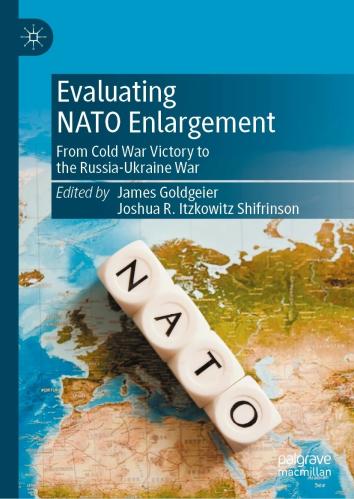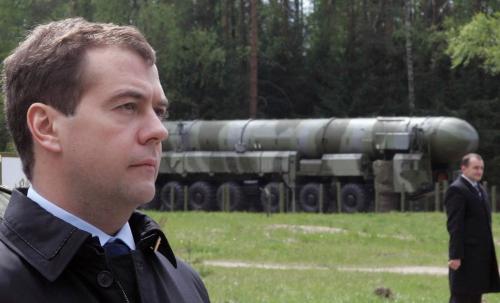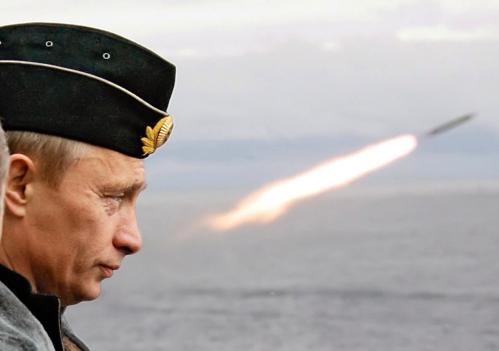It remains strongly in the U.S. interest, as well as the interest of America’s allies in Europe and Asia, that neither Russia nor the United States possess ground-based, intermediate-range systems, writes Steven Pifer. That means preserving the INF treaty and bringing Russia back into full compliance. This piece originally appeared in The Hill.
In 2014, the U.S. government charged that Russia had violated the 1987 Intermediate-Range Nuclear Forces Treaty (INF) by testing a banned ground-launched cruise missile of intermediate range (500 to 5,500 kilometers). Three weeks ago, The New York Times reported that Russia has deployed the missile.
This is a serious matter. The Russian violation threatens international security and undermines a milestone arms reduction agreement concluded by President Reagan and Soviet Premier Mikhail Gorbachev. It could endanger the entire arms control regime between the United States and Russia, and with it our ability to manage a growing nuclear competition with potentially deadly consequences.
It nevertheless remains strongly in the U.S. interest, as well as the interest of America’s allies in Europe and Asia, that neither Russia nor the United States possess ground-based, intermediate-range systems. That means preserving the INF treaty and bringing Russia back into full compliance.
These goals, however, appear increasingly unlikely. At a minimum, Washington should mobilize international political pressure on Moscow, particularly from those countries that will be targeted by the Russian missiles, and proceed with deployable, effective conventional weapons systems that would strengthen U.S. capabilities in Europe and Asia.
Writing in The Hill on February 28, Tom Karako provided four recommendations for an American response. They are serious and worth considering, but with caution.
1. Karako’s first proposal is to declare formally that Russia is in “material breach” of the INF treaty. That may well be true, but such a declaration, which is a responsibility of the executive branch, usually marks a final step before withdrawal from a treaty. We should be careful. If the INF treaty collapses, Washington needs to manage it in a way that Russia is — and is seen by the rest of the world to be — responsible for the collapse.
2. Karako’s second recommendation is that the United States develop its own ground-launched, intermediate-range cruise or ballistic missile. Spending a little money on a feasibility study for a Pershing III is perfectly fine. It could remind the Kremlin just how much it did not like U.S. Pershing IIs and ground-launched cruise missiles in Europe in the early 1980s.
However, before spending real money on this, the Pentagon needs to address two questions. Can it afford to build intermediate-range missiles, given other defense modernization requirements? In addition, where would it deploy such missiles? They could hold targets in Russia at risk only if they were deployed in Europe or Asia.
However, despite Moscow’s more aggressive stance, there would be little enthusiasm among U.S. allies to accept those missiles. Apart from NATO as an alliance, perhaps some allies in Central Europe might individually volunteer, but deploying there would be hugely provocative to Moscow, and their proximity to Russia would make them vulnerable to preemption. The United States can legally develop air- and sea-based systems that can hold the same targets at risk in Russia at lower cost and risk.
3. Karako’s third proposal to beef up defenses against Russian cruise missiles makes eminent sense. Even if Moscow comes back into compliance with the INF treaty, the Russian military has demonstrated in Syria that it now has long-range, air-launched and sea-launched cruise missiles and has begun to match U.S. capabilities in these areas.
U.S. forces around the world need to be able to defend against them, bearing in mind that, as with defenses against ballistic missiles, defenses against cruise missiles are complicated and expensive.
4. Karako’s fourth suggestion would entail transferring U.S. missiles to allies. That demands great caution. In the late 1980s, the Reagan administration led the establishment of the missile technology control regime (MTCR). MTCR now includes some 35 members, including Russia, who have committed to control the proliferation of missiles that can deliver a 500-kilogram warhead to a range of greater than 300 kilometers.
If the United States were to transfer intermediate-range missiles to allies, Russia might well follow. How would we feel about Russian intermediate-range missiles showing up in Belarus, Syria, Iran or Venezuela? Memories of the 1962 missile crisis are such that Moscow probably would not consider Cuba — that is, unless Washington considered putting intermediate-range missiles in the Baltic states.
Unfortunately, the evidence is growing that Russia intends to break free of the INF treaty. That requires a U.S. response. Designing such a response is not easy, given the realities of the budget and alliance relations.
The response should entail measures that strengthen U.S. security, not measures that could not be executed (U.S. intermediate-range missiles on NATO territory) or would have unintended consequences that endanger U.S. interests (a collapse of the MTCR).
The Brookings Institution is committed to quality, independence, and impact.
We are supported by a diverse array of funders. In line with our values and policies, each Brookings publication represents the sole views of its author(s).











Commentary
How Washington should respond to Russia’s missile treaty violation
March 7, 2017